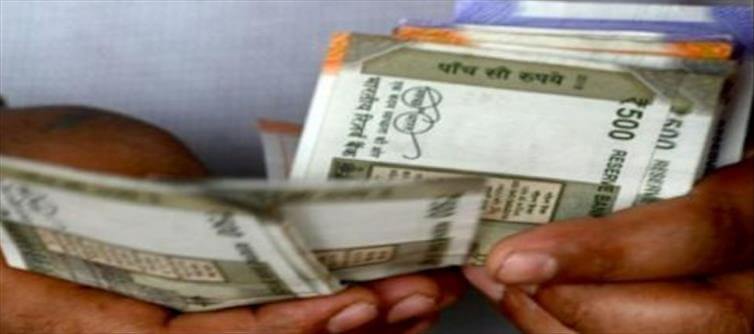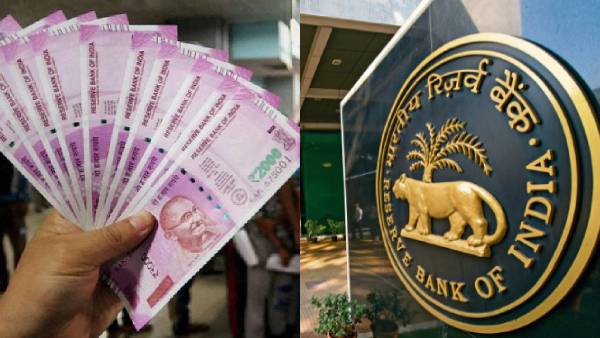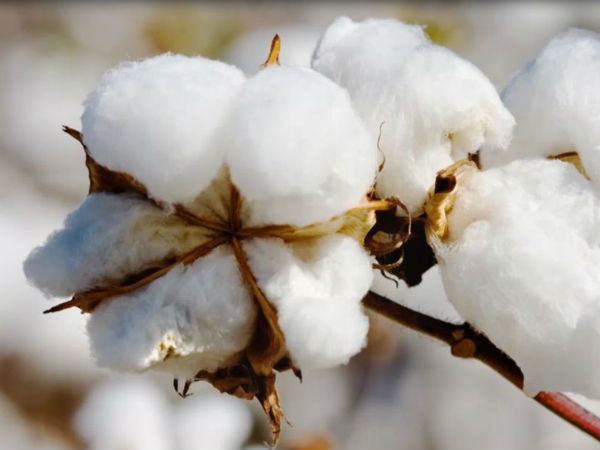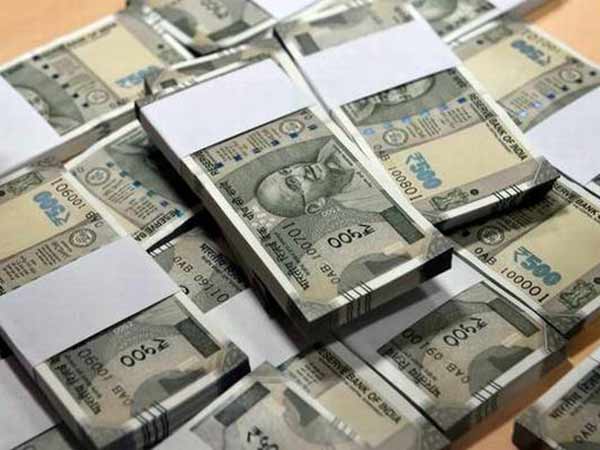Pushpa Telugu Movie Review, Rating
పుష్ప తెలుగు సినిమా రివ్యూ ,రేటింగ్
-
IND vs WI 2nd Test: Date, Venue & Timing ..
-
Top 3 Active Indian Cricketers With Most 100s
-
Malaika Arora’s 7 Chinese Movements To Transform Your Body ..
-
Elvish Yadav Enters Bigg Boss 19 House ..?
-
Darjeeling Bridge Mishap: 9 Dead, PM Modi Condoles ..
-
Ranbir Kapoor and Deepika Padukone Spotted at Mumbai Airport ..?
-
Martin Scorsese Nearly Became a Priest, Expelled for Misbehavior ..?
-
Shahid, Kriti or Rashmika: Who’s the Richest ‘Cocktail 2’ Star?
-
The Bollywood Superstar with Three Luxury Vanity Vans ..?
-
Madhuri Dixit Distanced Herself from Sanjay Dutt Post-Arrest ..?
-
Diwali 2025 Box Office Clash: A Festival of Films and Fireworks ..?
-
Bigg Boss Tamil 9 Grand Premiere: Host Vijay Sethupathi Says, 'The New Beginning'
-
Bigg Boss Tamil Season 9 Launch Live Updates: Vijay Sethupathi Returns as Host
-
Bigg Boss 9: Aghori Entering the House – Fans Excited About the Potential Drama!
-
Bigg Boss Tamil Season 9: Is This the Final List of Contestants?
-
Bigg Boss Tamil Season 9: Premiere Date, Time, Where to Watch, and Contestant List
-
Rashmika Mandanna Shares First Post After Rumored Engagement ..?
-
Bigg Boss Tamil 9: Full List of Contestants Set to Enter the Show Hosted by Vijay Sethupathi
-
CM Stalin Reviews Expansion of Drainage and Sewage Systems in TTK Road Venus Colony
-
Honoring the Compassionate Soul: CM Stalin Pays Tribute to Saint Vallalar on His Birth Anniversary
-
Kantara Chapter 1 Box Office Report (Day 4) ..
-
Why Doctors’ Handwriting Is a Public Danger - The Shocking Truth About Doctors’ Handwriting
-
Maruti Suzuki First to Ship Cars to Kashmir Valley by Rail - Via World's Tallest Railway Bridge
-
2025 Mahindra Thar Facelift: Top 5 Things You Need To Know
-
Hero MotoCorp September 2025 Sales Report - Scooters Sales Rise By 54.3%
-
Suzuki India September 2025 Sales Report - 25% YoY Growth
-
CM Vijayan Hails Mohanlal's Dadasaheb Phalke Honour as Golden Milestone for Malayalam Cinema
-
Diwali 2025: Top 5 Sweet Shops In Bandra, Why Are They Special And What You Must Try
-
Sleeping Late, Waking Late? The Hidden Dangers to Your Health
-
Struggling With Joint Pain? Check Doctor's Advice For Natural Remedies And Effective Management
-
Metabolism, Blood Purification: THESE 10 Powerful Indian Spices Are Natural Healers – Check Surprising Health Benefits
-
RRB ALP 2025: Document Verification and Medical Exam Schedule Released – Here’s How to Check
-
How Much Education is Required to Apply for the SSC Head Constable Recruitment?
-
Applications Open for MP Police ASI and Subedar Recruitment: Apply Now!
-
Arattai vs WhatsApp: 5 Ways Arattai Is Ahead of WhatsApp
-
Snapchat to Start Charging Users for Storing 'Memories': Here's What You'll Pay & How to Download Snap for Free
-
Mumbai's 2nd Airport, NMIA, to Begin Operations on October 8; PM Modi to Flag Off New Gateway – All You Need to Know
-
Avatar: The Way Of Water Re-Release North America Box Office: Previews Fall Short Of $500K - Has The Magic Faded For James Cameron's Epic?
-
10 Largest Caves in India: Exploring the Majestic Underground Wonders
-
TANCET MBA 2026 Eligibility Criteria: Check Age Limit and Other Qualifications
-
Can Junk Food Boost Immunity? Here Are the Best OptionsCan Junk Food Boost Immunity? Here Are the Best Options
-
House Cleaning Made Easy: Remove Sticky Dirt from Screen Doors and Kitchen Cabinets Without Chemicals!
-
Vitamin B12 Deficiency? Boost Your Levels Quickly with This Fruit!
-
Migraine Pain Troubles? Experts Recommend Natural Ways to Manage It
-
Mix This with Yogurt and Excrete Bad Cholesterol: Ayurvedic Expert Reveals a Miracle Recipe
-
Innovative Home Farming: Grow Tomatoes and Brinjals on a Single Plant with Grafting!
-
Karwa Chauth 2025: Eat These Healthy Foods in Sargi for Energy Throughout the Day
-
Lava Bold N1 Lite Launched: Affordable Smartphone with Impressive Features at Rs 5,698
-
Vivo V40 Pro Sees Massive Price Cut on Flipkart: Premium Phone Now More Affordable
-
OnePlus 13 Price Drops by Rs 10,000 in Amazon Great Indian Festival Sale 2025
-
Urgent Security Alert for Google Chrome and Mozilla Firefox Users: Update Your Browsers Immediately
-
Tata Nexon Tops the Sales Charts: India’s Best-Selling Car in September 2025
-
Kawasaki KLE 500: A New Adventure Bike Set to Make Waves in India by 2026
-
Top 5 Affordable Bikes for Daily Commutes in India: Budget-Friendly & Efficient Choices
-
India's Top Billionaires in 2025 and Their Educational Backgrounds: A Glimpse Into the Minds Behind India's Wealthiest
-
Maruti Suzuki Factories To Run 7 Days a Week During Festive Boom: What You Need to Know
-
Kia India Restructures Leadership Team: New Sales and Business Chiefs Appointed Amid Expansion Plans
-
Ducati Plans to Launch DesertX V2 Adventure Motorcycle: Spy Shots Reveal Key Details
-
Maserati Launches the MC Pura Coupe and Cielo with 621 HP V6 in India: Prices, Features & Details
-
Life Coach Luke Coutinho's Ultimate Guide to Building Calm in Everyday Life
-
5 Common Nutrition Myths Debunked by Experts
-
IndiGo Leads the Way in Market Share and Punctuality, FlyBig Struggles with Cancellations
-
Jammu and Kashmir Board Releases Date Sheet for Class 10 Exams 2025: All You Need to Know
-
Shweta Tiwari Birthday Special: 8 Traditional Outfits Perfect For Diwali 2025
-
Citroen Aircross X: Is It the Right Choice for You at ₹8.2 Lakh?
-
Modi Blames RJD Rule for Bihar's Migration Issues, Lauds Nitish Govt, and Launches Rs 62,000 Cr Initiatives
-
Sharad Purnima 2025: Significance, Puja Vidhi, and Muhurat
-
2025 Mahindra Thar Facelift: Two New Broad Trims - AXT and LXT – Features Breakdown
-
Viksit Bharat Buildathon 2025: A Revolutionary Initiative for Students – All You Need to Know
-
Gemini Nano Banana Hacks: How to Make AI-Powered Handwritten Diwali 2025 Invitations, Reveals Google
-
WhatsApp to Introduce @Username Handles: A Major Shift Beyond Phone Numbers
-
Diwali Bonanza: Samsung Galaxy S24 Ultra 5G Price Drops by RS 56,000 on Flipkart - Don’t Miss Out!
-
Exclusive Discounts on 2025 Tablets: Up to 53% Off from Apple, Samsung, Lenovo, Xiaomi, and OnePlus!
-
7 Calming Yoga Poses to Reduce Anxiety and Find Inner Peace
-
Rashmika Mandanna Sparks Diwali Madness with Crocs
-
Back to Sadhguru: Samantha Faces Brutal Insta Reactions
-
Janhvi Kapoor Admits It Loud and Clear - Nobody Listens to Star Kids’ Struggles
-
Pooja Hegde’s Shocking Escape from Paparazzi Madness
-
Pooja Hegde Dials Up the Glam to Silence Her Critics in Kanchana 4!
-
6 Easy Lip Care Tips for Naturally Pink and Soft Lips at Home
-
Easy Butter Garlic Pan-Fried Noodles Recipe: How to Make Quick and Delicious Noodles for Your Office Lunch Box
-
What Is Sleep Tourism? Why This Travel Trend Is Helping Gen Z and Millennials Catch Up On Rest
-
7 Clever Uses Of Coconut Husk You'll Wish You Knew Sooner
-
DIY Hacks To Clean White Shoes At Home And Make Them Look Brand New
-
Is Your Toothpaste Secretly Non-Veg? Brushing Your Teeth Could Be Breaking Religious Rules
-
Kolkata Metro Update: 6 New Metro Trains to Operate on Green and Blue Lines for Red Road Carnival
-
Relief for Pensioners Before Diwali: Minimum Pension May Increase by ₹2,500
-
Diwali 2025: 5 Must-Have Kurtas for Men To Steal The Spotlight At Every Festive Party
-
When Is Diwali 2025: 20 or 21 October? Why Is There Confusion?
-
Karwa Chauth 2025: Are Single Women Allowed To Fast And Celebrate Like Married Women?
-
Sharad Purnima Vrat 2025: 6 or 7 October? Confirmed Date, Time, and Tradition Behind Keeping Kheer Under the Moon
-
Diwali 2025: Saturn Flip After 500 Years – Test or Reward? The Cosmic Message for Each Zodiac Sign
-
Karwa Chauth 2025: 6 Bollywood-Inspired Red Sarees to Shine Bright From Puja to Moonrise
-
Are Cough Syrups Safe for Children? DGHS Advisory Raises Alarms
-
CBSE 2026 LOC Portal Reopens: What You Need to Know!
-
India Bike Week 2025: A Thrilling Return to Goa – December 12-13
-
Tech Tips: Sora App – The AI-Powered Video Revolution You Need to Know About
-
Indian Work Apps Take Center Stage: A Move Towards Digital Sovereignty
-
Planet Y: Mysterious New World Could Rewrite Our Solar System
-
The Apple Watch's Siren: A Life-Saving Feature in Action
-
Comet Browser Goes Free: Here's Why You Should Check It Out
-
The Law on Rent Increases: What Tenants Should Know
-
Zoho Arattai: A Powerful Indian Alternative to WhatsApp with Features WhatsApp Can’t Match
-
Samsung One UI 8 Update: Major Changes Coming to Galaxy S23 Series – Here's How to Download
-
Zoho Arattai: India's Answer to WhatsApp and Telegram with a Unique Twist
-
IRCTC Tatkal Ticket Booking: 5 Essential Tips to Get a Confirmed Ticket in Minutes
-
How Much Does YouTube Pay for a View? Key Insights for Content Creators
-
Blinkit Delivery Boy Caught While Trying To Touch Woman's Breasts - CCTV Footage
-
Alert for Gmail Users: Disable This Google Calendar Setting to Protect Your Privacy
-
RBI Announces Instant Cheque Clearing: What This Means for Customers
-
Festive Demand Pushes Auto Sales in September, Stronger Momentum Expected in October: Report
-
Government Increases MSP for Rabi Season: Benefits for Farmers and Stable Inflation Expected
-
Disney+ Hotstar to Rebrand as Disney+ in Several Asian Countries: Will Subscription Prices Increase?
-
Rotten Chicken and Filthy Kitchens: Bengaluru KFC Horror Exposed
-
Vijay Deverakonda's Lavish Hyderabad Mansion, Luxury Cars, Income Revealed: Inside The Actor's Million-Dollar Lifestyle!
-
Could There Be A Hidden 'Planet Y' in Our Solar System? What We Know So Far
-
Karwa Chauth 2025: Find Your Perfect Mehendi Match with Google Gemini AI
-
5 Coffee Alternatives That Will Keep You Energized All Day
-
Everyday Spices That Double as Home Remedies
-
How to Make Healthy Ragi Chips at Home
-
Plant-Based Meat in India: Fad or Future of Food?
-
Stop Paying for OTT: This Open-Source Hack Lets You Watch Everything
-
Battle for Second Place Intensifies as This Indian Carmaker Overtakes Competition
-
Bihar STET Application Form 2025: Check Latest Updates by BSEB & Last Date to Apply
-
This Bike Maker Tops the September 2025 Two-Wheeler Sales Chart
-
Uttar Pradesh Leads India with 1,000+ Railway Stations: Check the Full Breakdown
-
Paneer vs Tofu: Which is Healthier for Muscle Gain?
-
Tata Nexon Tops Sales Chart in September 2025: Beats Maruti, Mahindra, and Hyundai
-
Secret Mountains in India Every Trekker Should Know
-
Apple Watch SE 3 Review: The Most Sensible Apple Watch You Can Buy Today
-
Why Indian Offices Burn Employees Alive While Europe Clocks Out at 5 PM
-
Indian Herbs You Can Use for Better Sleep
-
Why the Smartest Indians Don’t Want to Live in India
-
How Blind Fanaticism Destroyed a Vijay Fan’s Life - From NIT & IIM to Police Custody
-
MPESB MP Police Bharti 2025: Apply Now for Police Recruitment in Madhya Pradesh
-
WhatsApp Rolls Out Long-Awaited Features: Live Photos, Meta AI Themes, Document Scanner & More
-
Shoaib Malik’s Private Life Goes Public Again - Third Divorce?
-
Instagram's Major Redesign: Reels to Take Center Stage
-
NCERT's New Educational Modules: Connecting History to Modern India
-
Post Office RD Scheme: How You Can Accumulate ₹35 Lakh in Just 5 Years
-
Can Employees Invest in NPS Along with UPS? Learn How to Benefit from Both Schemes
-
UPI Payments: SEBI’s New System – What You Need to Know and the Benefits for You
-
PF Tips: How to Check Your PF Balance with a Missed Call – Easy & Quick!
-
Is 5G a Threat to Your Phone's Battery? Here's Why It Drains Faster
-
Post Office Small Savings Scheme: The Highest Income You Can Earn!
-
AI Skills: Build a Career with the Help of AI, These 5 Skills Will Be Very Useful
-
CGBSE 10th-12th Board Exams: Fill Out Your Forms Before October 31!
-
Chennai Thiruvanmiyur’s Clean Beach Shows What India Gets Wrong Everywhere Else
-
Stay Alert: Rising Cybercrime Tactics You Need to Know About
-
Russia Offers Scholarships for Indian Students: A Golden Opportunity for 200 Students This Year
-
How to Prepare for NEET and JEE Together: 5 Tips to Help You Ace Both Exams
-
UIDAI Revises Aadhaar Service Fees: What You Need to Know About the Latest Changes
-
NPS Revamp: More Flexibility and Investment Freedom for Subscribers
-
How to Get a New Car with Zero Down Payment: A Step-by-Step Guide
-
Japan’s Next PM Says What Europe Won’t: Deport All Illegals
-
How to Get a Credit Card Without a Bank Account: A Complete Guide
-
How to Create a Fund of Lakhs with Just Rs 1,000 Every Month: The Best Investment Schemes
-
Forgot Your UAN Number? Here’s How to Recover It in Minutes: A Complete Guide
-
Forget PPF and NSC! This Savings Scheme Offers the Highest Interest Rates: Here's How You Can Accumulate Lakhs with Sukanya Samriddhi Yojana (SSY)
-
Why Power Banks Are Banned on Flights: Is It About Safety or Something Else?
-
Flipkart’s ₹7 Scam: Why Small Charges Are Looting Millions of Indians
-
GPay Payment Stuck? Here’s What You Should Do and How to Get Help Immediately
-
Scam Alert: Fraudsters Posing as Fake NRIs – How to Protect Yourself
-
Fast Charging: Does It Harm Your Mobile Phone? Here’s What You Need to KnowFast Charging: Does It Harm Your Mobile Phone? Here’s What You Need to Know
-
Why BCCI Can’t Handle Goodbyes With Class - BCCI’s Habit of Humiliating Legends
-
Tech Tips: How to Transfer Chats from WhatsApp to Arattai in Just a Few Minutes
-
Meta AI: Your Chats May Soon Be Used to Show You Ads — What You Should Know
-
No More Stress: How to Book Tatkal Tickets for Diwali and Chhath Festivals
-
PFRDA Launches Pension Scheme for Gig Workers: A First for India
-
How to Exchange Mutilated or Discolored Notes: A Simple Guide
-
Bihar’s ₹33,000 Cr Freebie Carnival: Development Dies, Politics Thrives
-
Step-up SIP: A Smart Plan to Secure Your Child's Future and Save Rs 50 Lakh
-
Arattai: The Indian Messaging App on the Rise, But Can It Compete with WhatsApp?
-
Unclaimed Shares and Dividends to Be Transferred Faster: New Portal by Ministry of Corporate Affairs
-
From Swadeshi to a Self-Reliant India: NCERT’s New Educational Modules to Inspire the Next Generation
-
Apple's Box Opens Again: 5 New Devices Expected to Launch This Month
-
NCERT Launches Special Educational Modules: From Swadeshi to a Self-Reliant India
-
India or Garbage? Why Our Streets Stink of Hypocrisy More Than Trash
-
Indian Army Recruitment 2025: Apply for 194 Group C Posts and Kickstart Your Career in the Army!
-
5 Reasons Why You Should Know the SIP Formula to Become a Millionaire in 20 Years
-
The Secret to Growing Rs 1 Lakh in 2 Years: Invest in a Post Office FD in Your Wife’s Name
-
5 Easy Steps to Pay Your Vehicle’s Challan Online in Minutes
-
Tea Taster Career Opportunity: Government Launches 210-Hour Course for Tea Lovers
-
Salary of Panchayat Assistant in Uttar Pradesh: A Surprising Insight
-
Credit Card Discounts: Why Banks Offer Them and How They Earn
-
Skyscraper Stations vs. ₹7,500 Freebies: Why India Is Stuck in the Welfare Trap While China Builds Empires
-
Impact of the New Education Policy on JEE and NEET: Can You Crack These Exams Without Coaching?
-
NWR Railway Recruitment 2025: Golden Opportunity for 10th-ITI Pass Candidates to Apply for Apprenticeship Posts
-
These Things Near Your Wi-Fi Can Slow Down Internet Speeds! Learn What Not to Do
-
How Much Money Can You Earn with 15,000 Views on YouTube?
-
BSSC Sports Trainer Recruitment 2025: Apply Now for 379 Vacancies
-
WhatsApp Update: Incognito Mode for Meta AI Chats - A New Privacy Feature
-
Gold Investment: Jewellery, Biscuits, or Gold Coins? The Best Buy This Festive Season
-
Aadhaar Update Fees Increase: Here's What You Need to Know
-
Deen Dayal Lado Lakshmi Yojana 2025: Empowering Women in Haryana with Rs 2,100 Monthly
-
Pradhan Mantri Matru Vandana Yojana (PMMVY) 2025: Financial Assistance for Pregnant Women
-
Lowest Home Loan Rates: Compare SBI, HDFC, PNB and More to Find the Best Deal
-
Ayushman Bharat Yojana: Cashless Treatment up to Rs 5 Lakh, No Age Limit - How to Create a PM JAY E-card
-
PM Svanidhi Scheme 2025: How Street Vendors Can Get Collateral-Free Loans of Up to Rs 50,000
-
Pradhan Mantri Kisan Samman Nidhi Yojana (PM-KISAN):
Empowering 140+ Indians within and abroad with entertainment, infotainment, credible, independent, issue based journalism oriented latest updates on politics, movies.
India Herald Group of Publishers P LIMITED is MediaTech division of prestigious Kotii Group of Technological Ventures R&D P LIMITED, Which is core purposed to be empowering 760+ crore people across 230+ countries of this wonderful world.
India Herald Group of Publishers P LIMITED is New Generation Online Media Group, which brings wealthy knowledge of information from PRINT media and Candid yet Fluid presentation from electronic media together into digital media space for our users.
With the help of dedicated journalists team of about 450+ years experience; India Herald Group of Publishers Private LIMITED is the first and only true digital online publishing media groups to have such a dedicated team. Dream of empowering over 1300 million Indians across the world to stay connected with their mother land [from Web, Phone, Tablet and other Smart devices] multiplies India Herald Group of Publishers Private LIMITED team energy to bring the best into all our media initiatives such as https://www.indiaherald.com

 As a result, the circulation of currency notes and coins has decreased to a large extent, but rupee notes are still in circulation. Cash is still king in many places, especially when it comes to transferring large amounts of money, where cash is used 99 percent of the time. We are using these currency notes every day, do you know what these currency notes are made of? If you say it's paper, it's not necessarily. Most of us believe that indian currency notes are made of paper, but that's not true. If it is made of paper, it will tear easily within a short period of time, similarly, if it is put in water, a currency note will tear easily. But currency notes do not face much damage even if they get wet. If there is no paper then what are indian currency notes made of..?
As a result, the circulation of currency notes and coins has decreased to a large extent, but rupee notes are still in circulation. Cash is still king in many places, especially when it comes to transferring large amounts of money, where cash is used 99 percent of the time. We are using these currency notes every day, do you know what these currency notes are made of? If you say it's paper, it's not necessarily. Most of us believe that indian currency notes are made of paper, but that's not true. If it is made of paper, it will tear easily within a short period of time, similarly, if it is put in water, a currency note will tear easily. But currency notes do not face much damage even if they get wet. If there is no paper then what are indian currency notes made of..? Presently Rs.10, Rs.20, Rs.50, Rs.100, Rs.200, Rs.500, and Rs.2,000 notes are in circulation. Due to wear and tear, these often get dirty or torn. This leads us to believe that all banknotes are made of paper. According to the Reserve bank of india, 100% cotton is used to print indian currency notes, not paper. Banknotes made of cotton can last longer than notes made using paper. Prevents damage from daily use. Cotton not only prevents rapid wear and tear but also reduces weight and creates a greater barrier to counterfeiting.
Presently Rs.10, Rs.20, Rs.50, Rs.100, Rs.200, Rs.500, and Rs.2,000 notes are in circulation. Due to wear and tear, these often get dirty or torn. This leads us to believe that all banknotes are made of paper. According to the Reserve bank of india, 100% cotton is used to print indian currency notes, not paper. Banknotes made of cotton can last longer than notes made using paper. Prevents damage from daily use. Cotton not only prevents rapid wear and tear but also reduces weight and creates a greater barrier to counterfeiting. Indian currency notes can easily carry machine-readable security thread, RBI seal, RBI Governor's signature, see-through registration, watermark and electrotype watermark, micro-letters, and hidden gandhi images on these cotton sheets. It is difficult to achieve such security on paper. Not only india but many countries like America print coins on such cotton fibers. The united states government dollar is printed on a 25 percent linen, 75 percent cotton blend.
Indian currency notes can easily carry machine-readable security thread, RBI seal, RBI Governor's signature, see-through registration, watermark and electrotype watermark, micro-letters, and hidden gandhi images on these cotton sheets. It is difficult to achieve such security on paper. Not only india but many countries like America print coins on such cotton fibers. The united states government dollar is printed on a 25 percent linen, 75 percent cotton blend.



 click and follow Indiaherald WhatsApp channel
click and follow Indiaherald WhatsApp channel